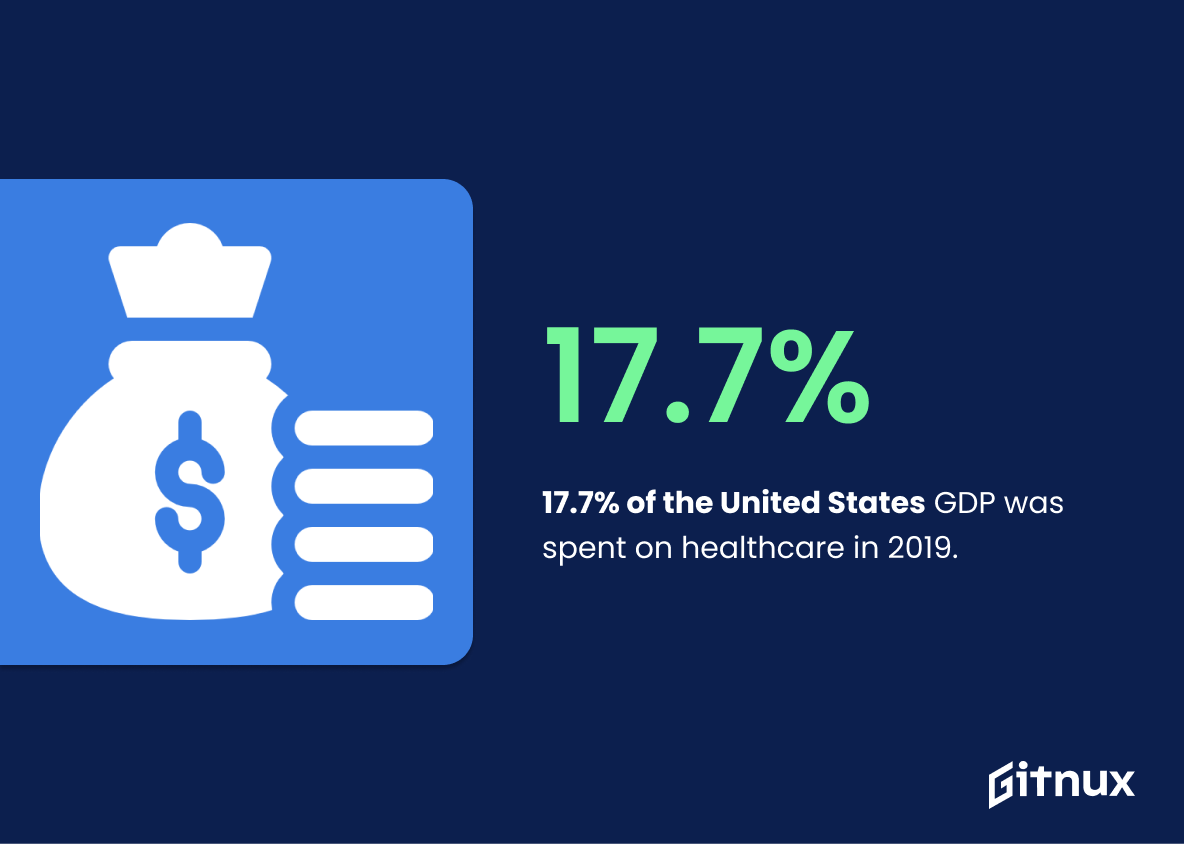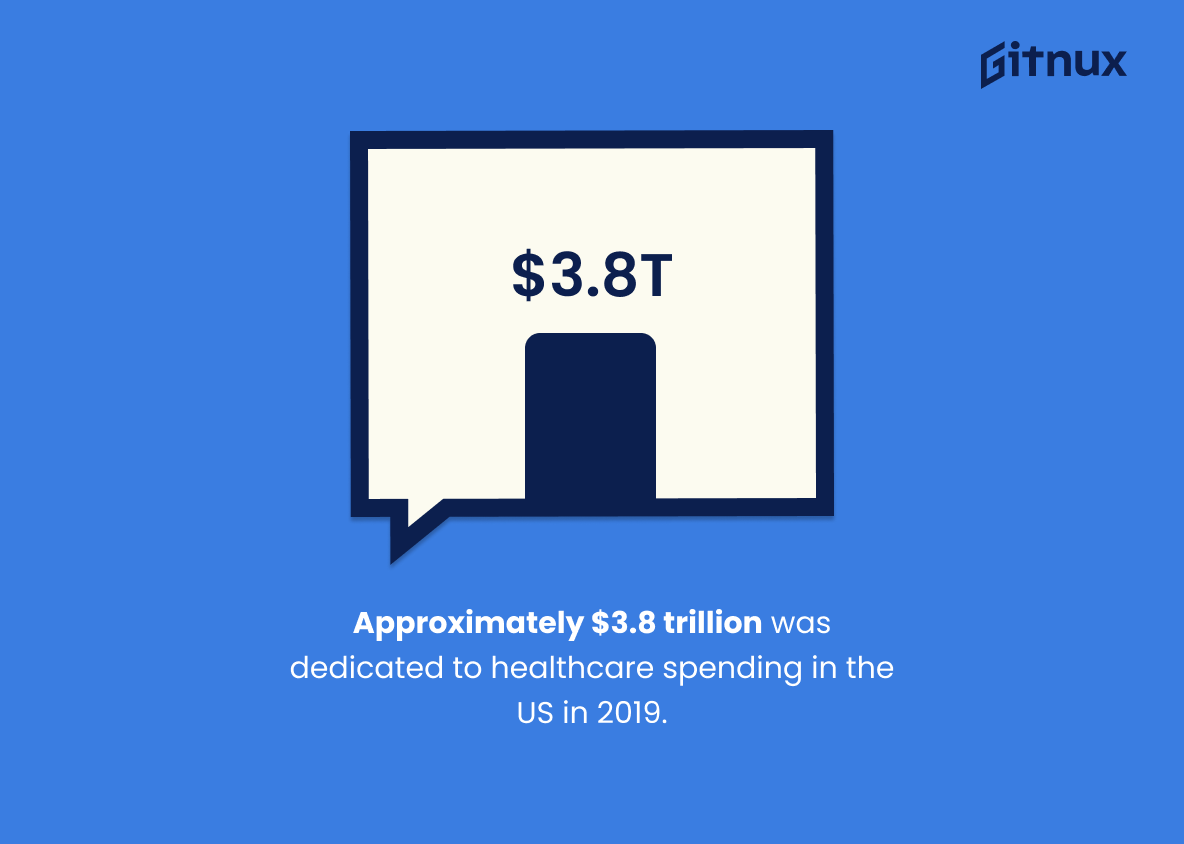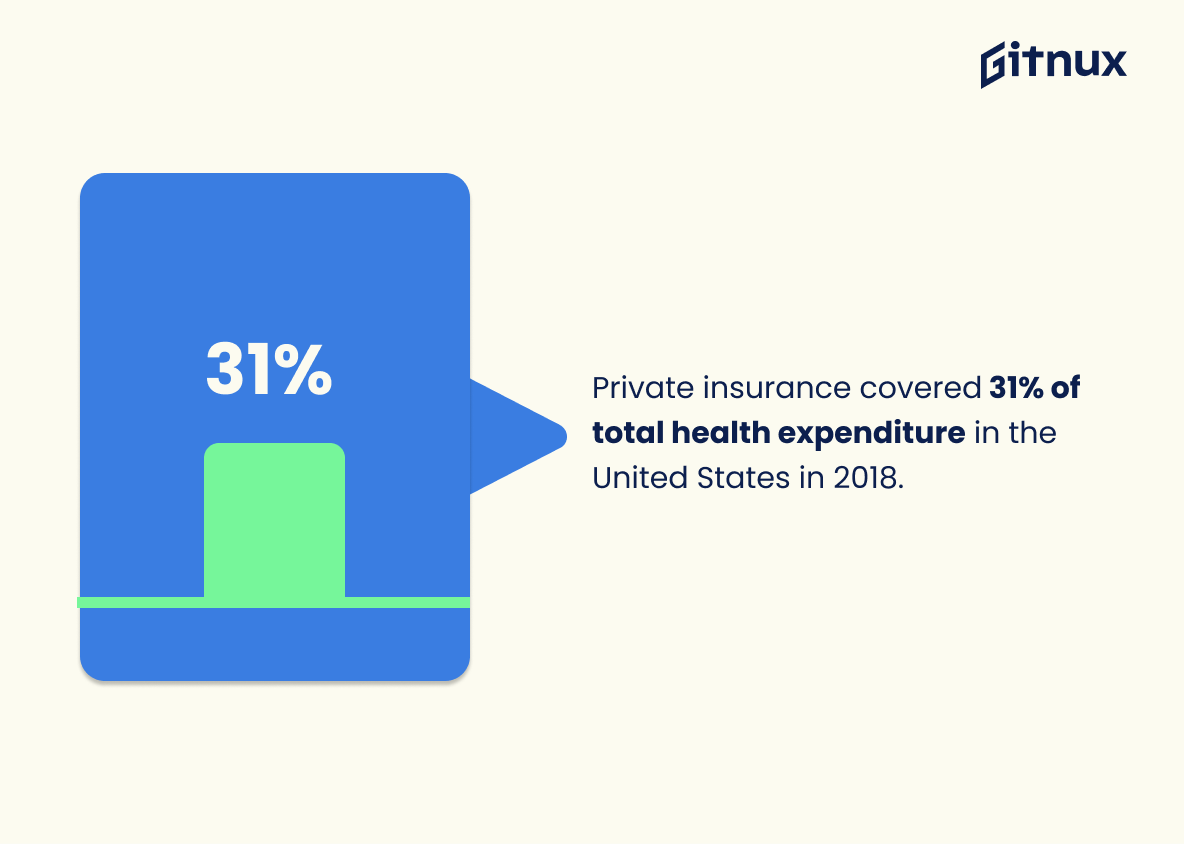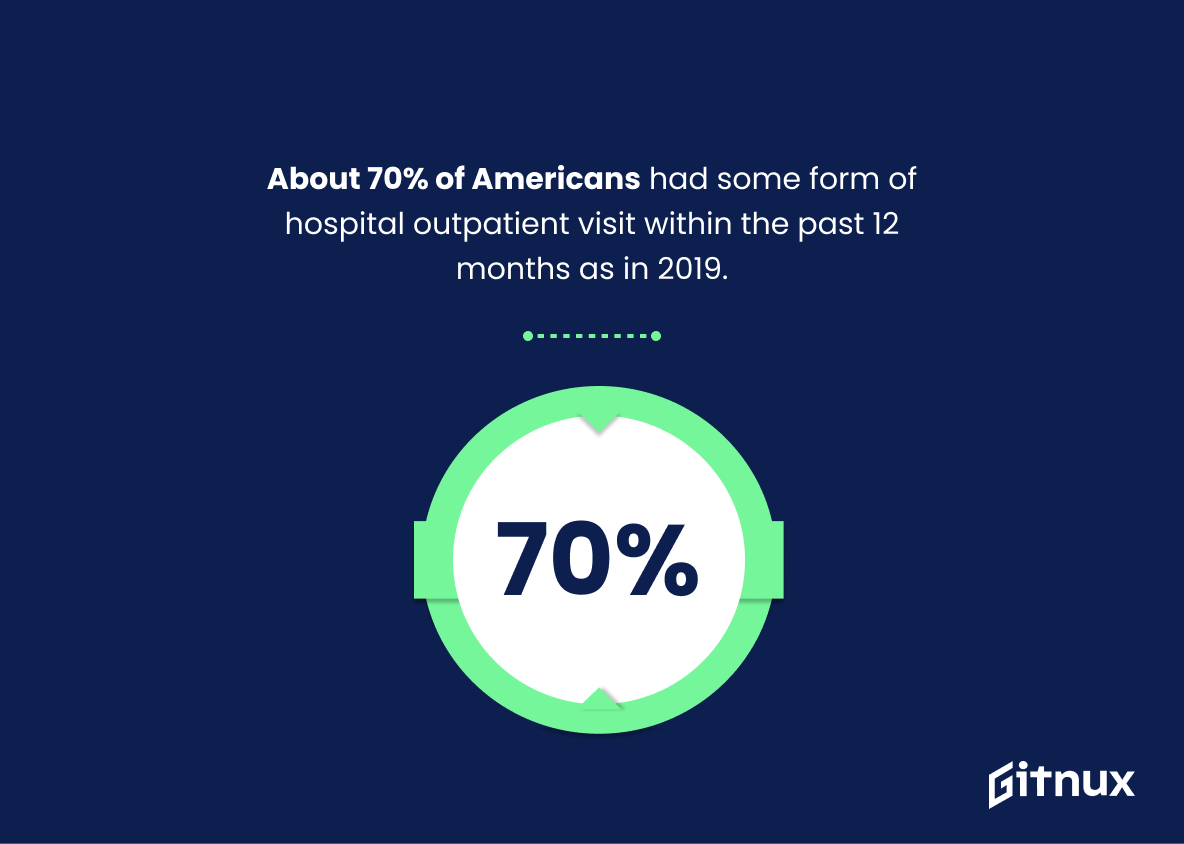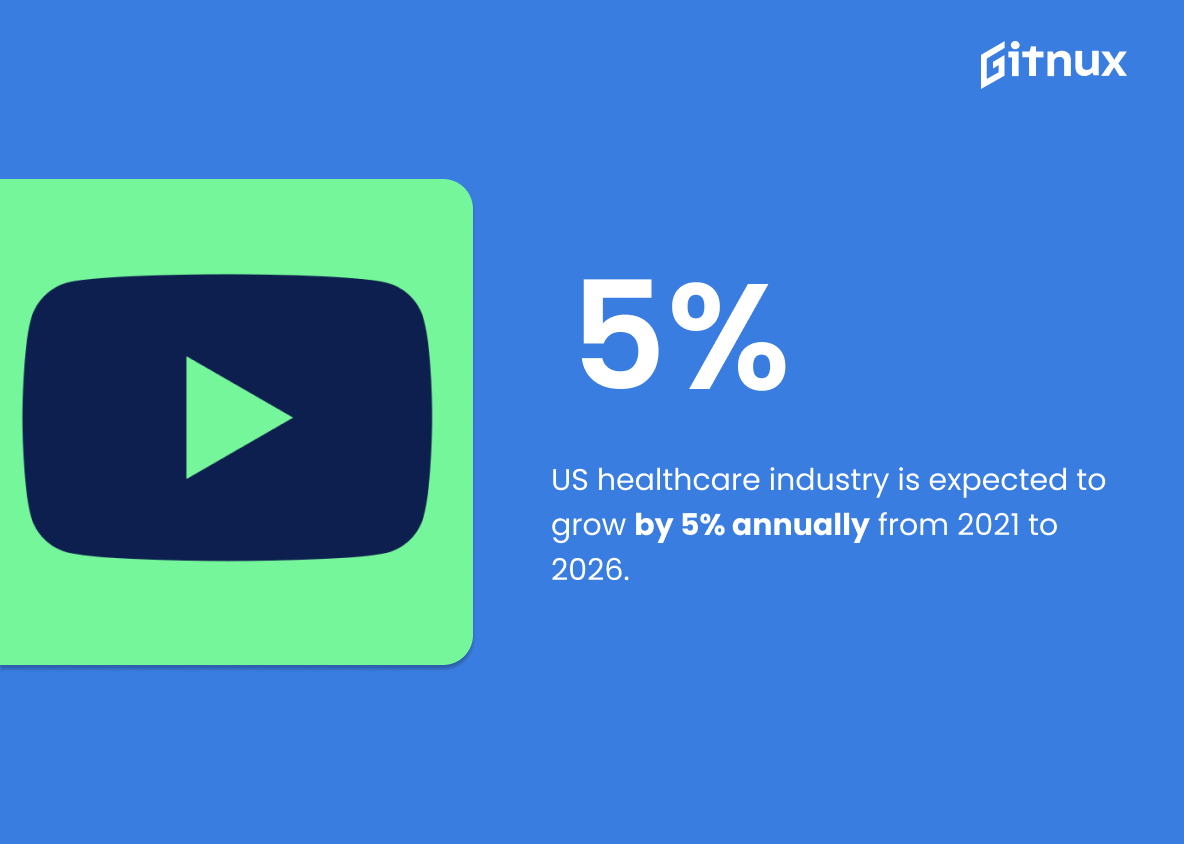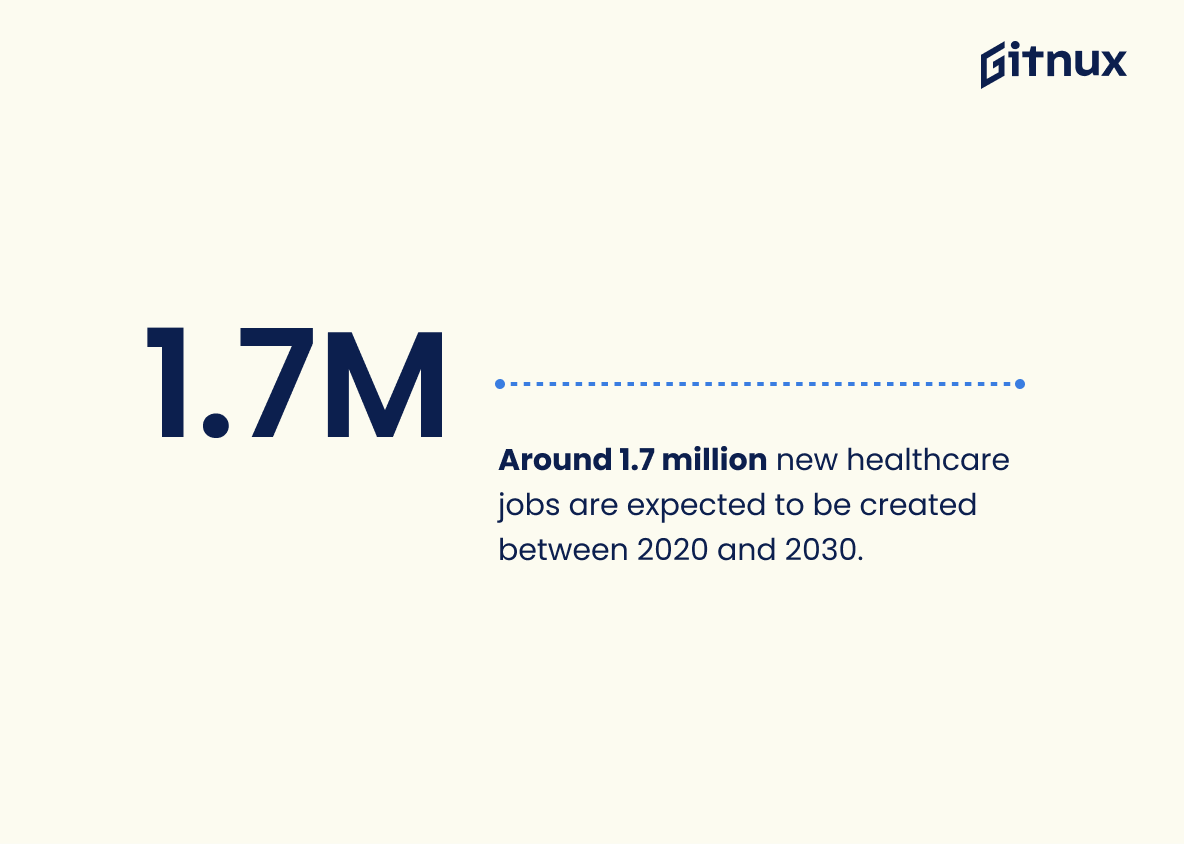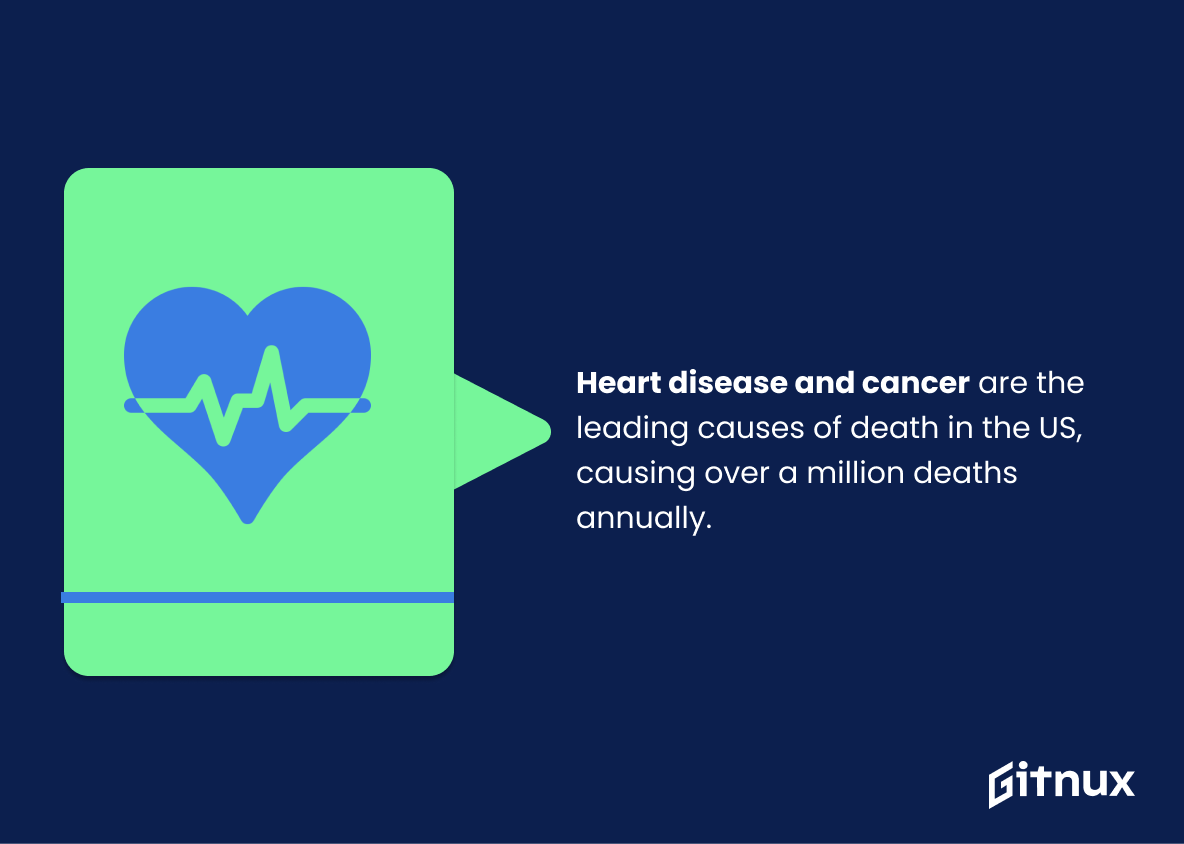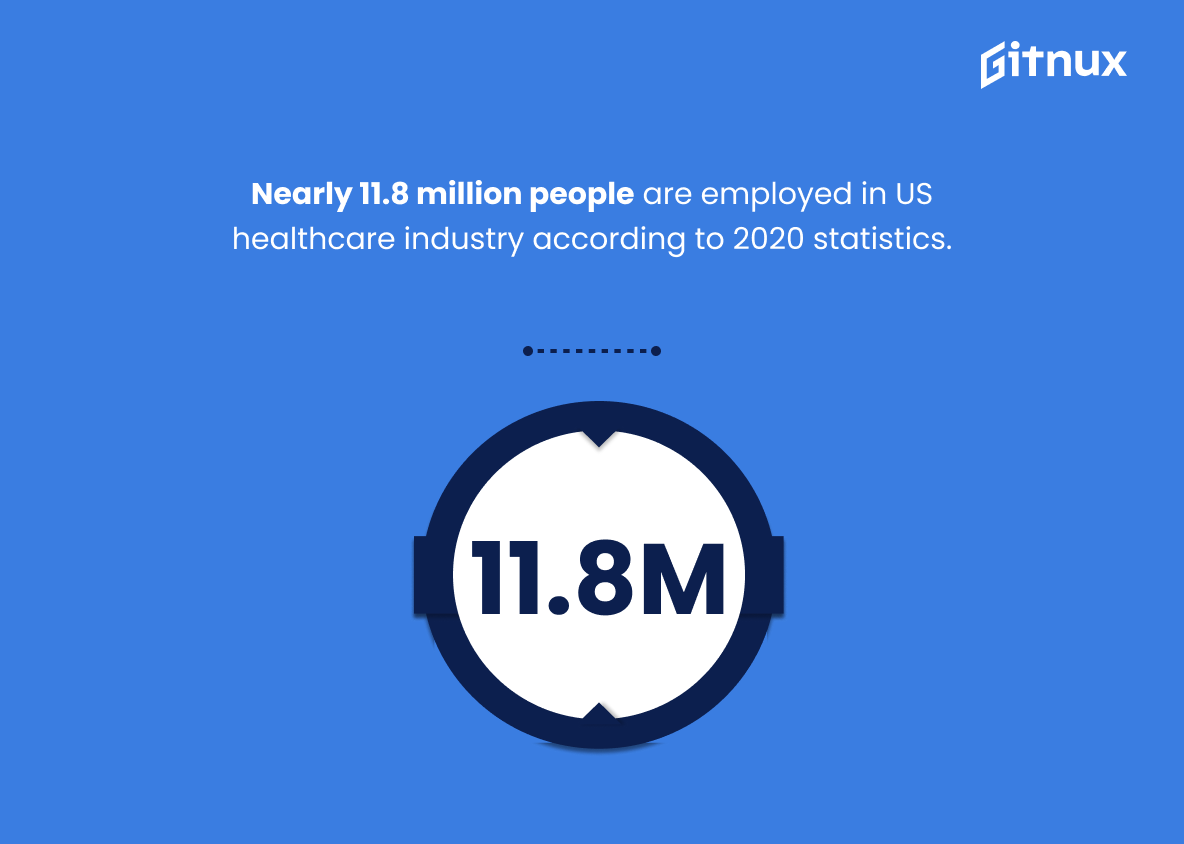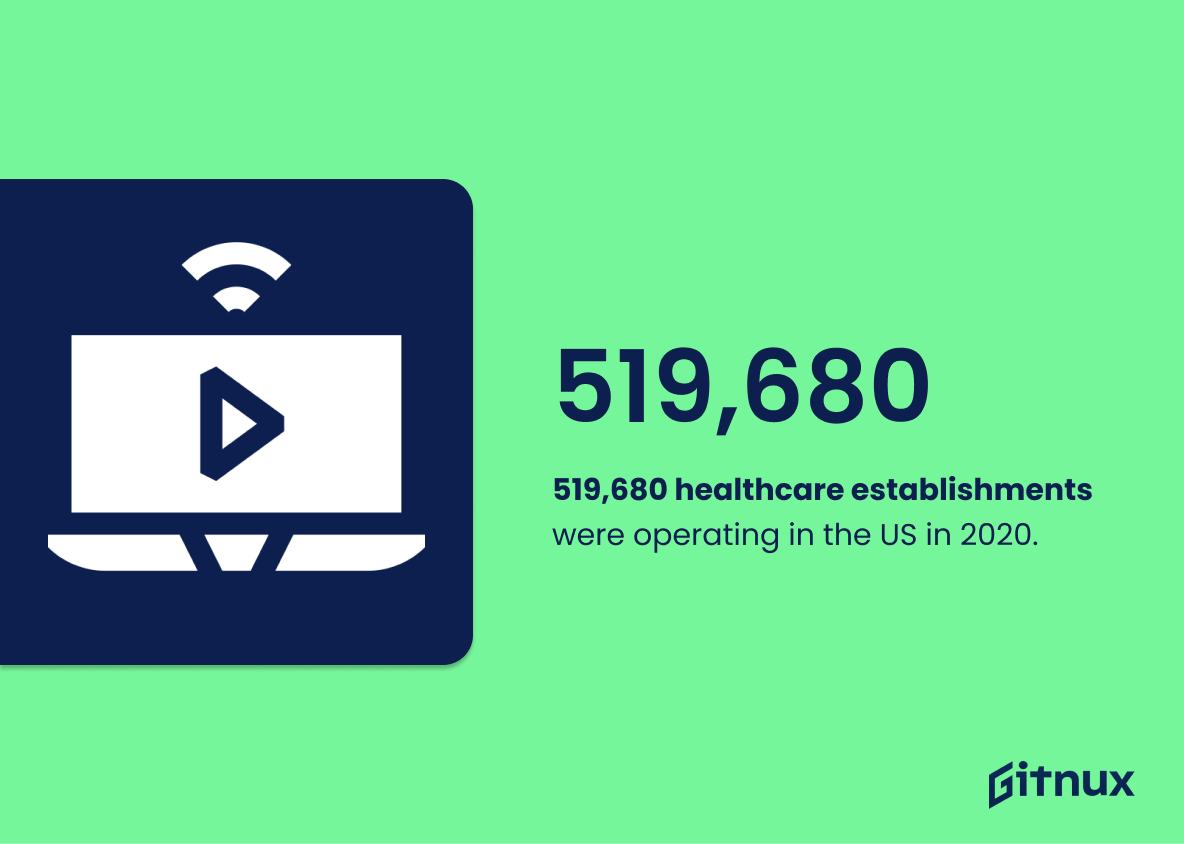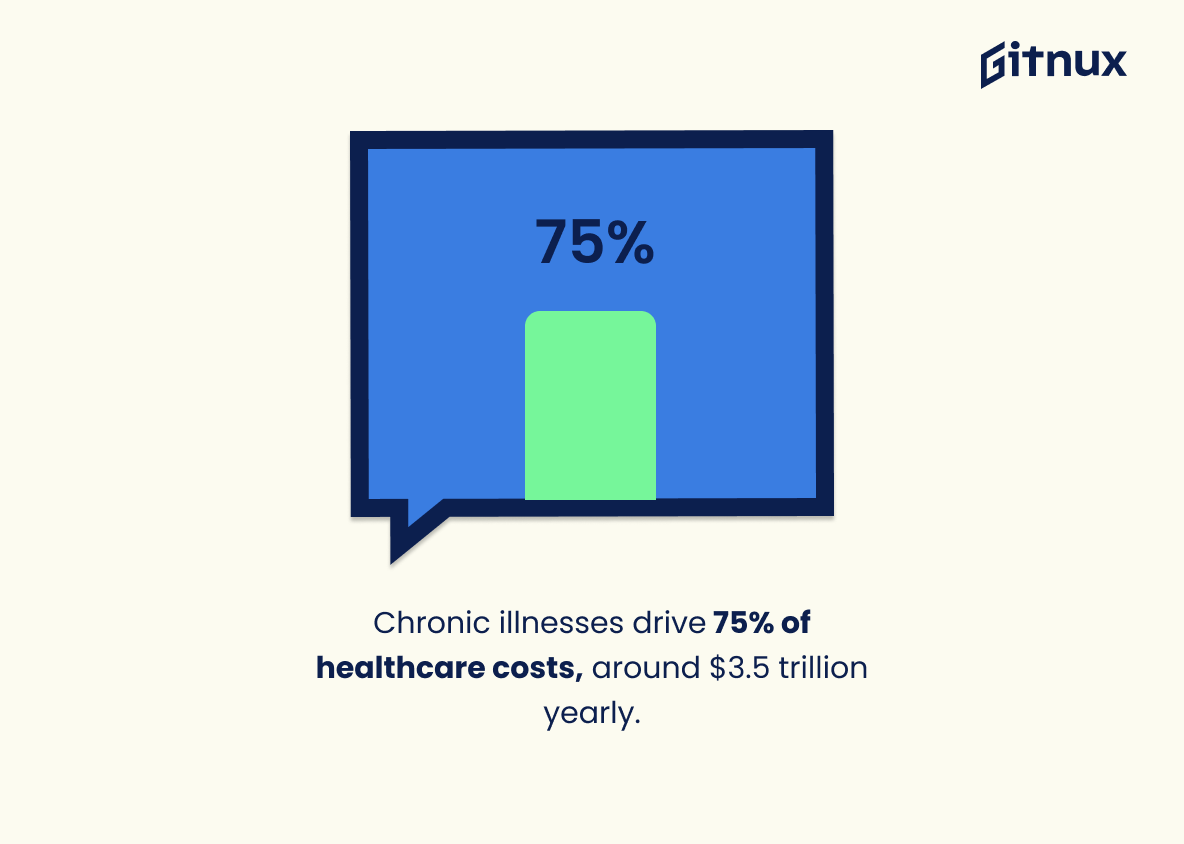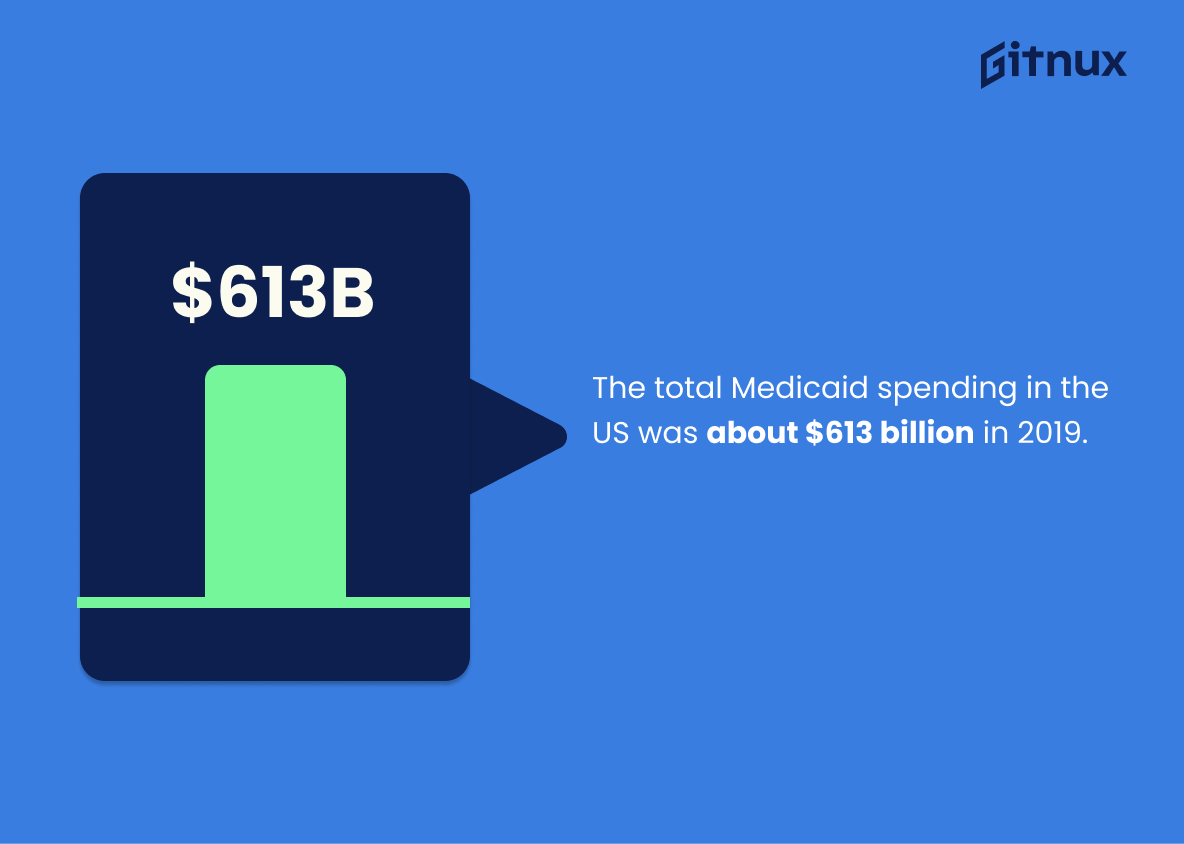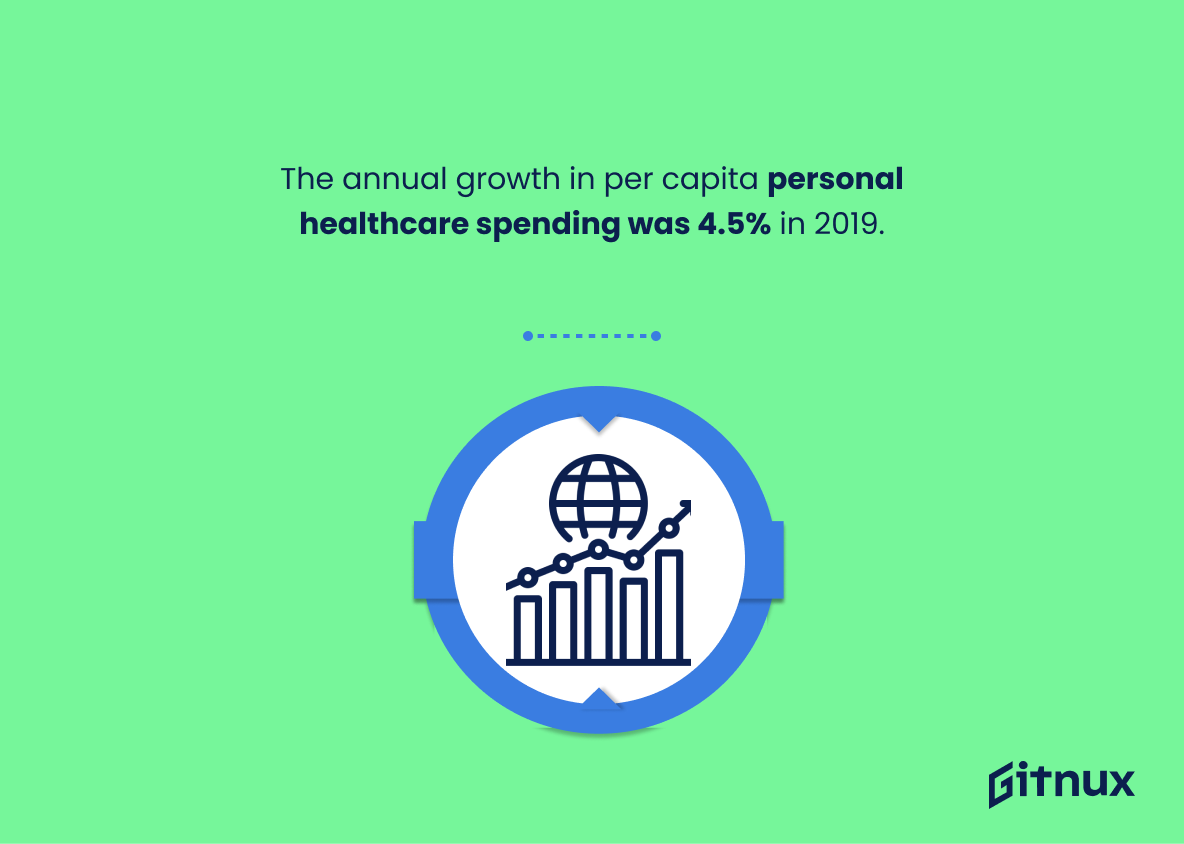In the complex labyrinth of American life, few sectors have as much impact on virtually every citizen as healthcare. From cutting-edge biotech innovations to public health initiatives, the US healthcare industry shapes the lives of millions daily. However, understanding the size, scope, and dynamism of this industry necessitates a deep dive into the facts and figures that illuminate its heartbeat. This blog post will offer an insightful exploration of the latest US healthcare industry statistics, providing a comprehensive overview of current trends, monetary implications, policy changes, and future projections. Join us in this analytical journey, demystifying the ins and outs of an industry that lies at the heart of human vitality and national discourse.
The Latest Us Healthcare Industry Statistics Unveiled
17.7% of the United States GDP was spent on healthcare in 2019.
Reflecting upon the staggering fact that nearly a fifth of the nation’s GDP went towards healthcare in 2019 paints a potent picture of the imposing significance of the healthcare industry within the U.S. economy. The figure also testifies to the ever-rising costs related to health management and the subsequent economic burden. It establishes a baseline that pivots discussions around the industry’s dynamics, policy implications, and potential improvements, making it essential to a comprehensive study of US Healthcare Industry Statistics. It’s a stark barometer of the scale, socio-economic influence, and complexities of the healthcare sector, meriting our focused attention.
Approximately $3.8 trillion was dedicated to healthcare spending in the US in 2019.
Shining a light on the considerable sum of approximately $3.8 trillion spent on healthcare in the US in 2019 does more than just pique interest—it paints a vivid picture of the sheer magnitude of the healthcare industry. By analyzing this figure, the reader is able to grasp the tremendous financial commitment allocated towards preserving and improving the nation’s health. Moreover, it subtly underscores the critical role of healthcare in the nation’s economy, given the significant portion of the federal budget it consumes, inviting blog readers to more deeply explore the complex nature of the US healthcare system and its economic impact.
The per capita health spending in the United States was $11,582 in 2019.
Diving into the heart of the healthcare scenario, the startling revelation of the per capita health spending in the United States stands at a notable $11,582 in 2019. Dubbed as one of the critical US healthcare industry statistics, this number serves as a significant indicator of the nation’s ever-growing healthcare expenses. It paints a vivid image of the magnitude of resources invested within the healthcare sector, leaving footprints that speak louder than just numbers.
In essence, that jaw-dropping figure of $11,582, reflects an important dimension of the overall health of the economy. It undeniably adds perspective on the burden carried by each American citizen when it comes to healthcare spending. Furthermore, it unravels a comparative canvas, providing an analytical tool to measure the spending efficacy against other countries and also the internal affordability of healthcare services. In a nutshell, this statistic offers a wealth of insights and implications that are instrumental in shaping important healthcare decisions and policies. So, you can see how essential it is when deciphering the intricate storytelling of US Healthcare Industry Statistics.
Private insurance covered 31% of total health expenditure in the United States in 2018.
Diving into the heart of the U.S. healthcare industry, one cannot overlook the invaluable snapshot provided by the 2018 statistic – private insurance funded 31% of total health expenditure. This piece of data becomes a central character in the ongoing narrative of healthcare, being a profound reflection of the significant role of private insurers in healthcare financing. The figure illuminates the colossal financial contribution of these private bodies, simultaneously signaling their impact on patient care options, availability of resources, and shaping industry trends. As we journey through the U.S. healthcare statistics, this figure stands as a prominent landmark, guiding our understanding of the multi-layered healthcare performance and policies.
About 45% of Americans had some form of hospital outpatient visit within the past 12 months as in 2019.
Peeling back the layers of the American healthcare landscape, one cannot overlook the significance of the revelation that nearly half of Americans, or approximately 45%, reported at least one hospital outpatient visit within the past year as of 2019. Such a statistic is enlightening because it shines a spotlight on the extent of the population’s interactions with the healthcare industry, indicating a broad reliance on outpatient services. This figure serves as a fundamental bridge, facilitating better understanding and in-depth analysis of the health-seeking behaviors of the populace, the demand and pressure put on the healthcare system, and the impact of health policy reform. It also incubates discussions about healthcare affordability, accessibility, and quality of care, all of which are hot-button issues that define the narrative surrounding the US healthcare industry today.
US healthcare industry is expected to grow by 5% annually from 2021 to 2026.
Delving into the forecasted growth rate of the US healthcare industry, it is significant to illuminate the expected annual rate of 5% from 2021 to 2026. This projection not only narrates a story of constant evolution but also underlines the monumental opportunities that lie ahead. In the grand scheme of the blog post about US Healthcare Industry Statistics, this piece of data acts as a fluorescent torch, shedding light on future trends and assisting stakeholders in strategic planning. It gives them a compass, navigating them towards prospective areas of investment and signaling areas that demand revitalisation. Moreover, it provides readers with a deeper, more comprehensive understanding of the environment, dynamics and potential of the industry, enabling them to look beyond the horizon and anticipate changes with better preparedness.
The United States spent nearly twice as much on healthcare as 36 high-income countries in 2019
Unraveling the implications of this statistic in the realm of US Healthcare Industry Statistics offers a compelling vantage point. Given the revelation that the US outspent 36 high-income countries almost twofold, it becomes an unmistakable testament to the massive financial commitments tied to healthcare in the United States in 2019. This serves as a clear indicator that the economic footprint of the US healthcare industry is substantial, and raises pivotal questions about the efficiency and effectiveness of healthcare spending.
It also suggests that the price tag of maintaining health in the US is notably high, opening the floor for interesting discussions about the cause of such high spending, the scope of services, and the quality of care. Consequently, it helps stakeholders, policymakers, healthcare providers, and consumers alike to evaluate the fiscal landscape of health management in the nation, opening the door to informed speculations about future healthcare trends and strategies.
From another perspective, this significant statistic may spark conversations about the disparities in health investment between the US and other high-income nations. Are other countries able to deliver comparable healthcare at a lower cost? Or does this extensive financial expenditure denote higher healthcare standards in the US? The answers to these facets make this statistic a springboard for an engaging discourse about the US healthcare setup that could facilitate essential reforms in the sector.
Lastly, this statistic intriguingly sets a benchmark for measuring advancements and improvements in the financial management of US healthcare against global standards. Further analysis could be employed to uncover the correlation, if any, between high healthcare expenditure and the overall health and longevity of the US population. Hence, it is a crucial statistic in the process of demystifying the economic implications of a nation’s health status.
Around 1.7 million new healthcare jobs are expected to be created between 2020 and 2030.
Delving into these insightful digits, ‘Around 1.7 million new healthcare jobs anticipated from 2020 to 2030’ affords us a peek into the pulsating heart of the US healthcare industry. The projection catapults the industry into a major player role in the nation’s employment sphere, hinting at a robust growth trajectory the industry is carved out for in the upcoming decade. Laced with opportunities, this data underpins a burgeoning sector, fuelled by increasing demands for healthcare services. It’s a testament to the fact that the industry is not just surviving, but thriving and poised to stamp a significant footprint in the US economy. Indeed, the forecasted job creation is a beacon of its future potential, reinforcing its stature as an integral pillar for economic development and a key driver for job creation.
Heart disease and cancer are the leading causes of death in the US, causing over a million deaths annually.
In the vibrant patchwork of the US healthcare industry, this statistic paints a striking picture. With heart disease and cancer standing as the twin titans of mortality, claiming over a million lives each year, they command significant attention. They fundamentally shape the nature and focus of the healthcare industry. This data points the direction towards the pressing need for greater investment in preventive care, advanced research, and innovative treatments for these prevalent diseases. It underscores the colossal responsibility the industry shoulders in improving patient outcomes and life expectancy. Furthermore, it frames pertinent discussions about healthcare affordability and accessibility, as more often than not, these conditions necessitate costly, long-term care requiring the financial robustness and sustainability of healthcare systems. So, look at this statistic not merely as numbers but as a mirror reflecting some of the biggest challenges and opportunities in the US healthcare industry.
Nearly 11.8 million people are employed in US healthcare industry according to 2020 statistics.
The essence of the aforementioned statistic, demonstrating that a whopping 11.8 million people are employed in the US healthcare industry, offers a lens into the scale and influence of this sector. Not only does it elevate our understanding of the healthcare industry as a significant employer and economic contributor, but it also underscores its vital importance in the nation’s social fabric. For readers, this figure serves as an impressive testament to the industry’s sheer size and impact, hence providing an engaging starting point for further exploration in the blog post on US Healthcare Industry Statistics.
519,680 healthcare establishments were operating in the US in 2020.
Exploring the intriguing depth of the U.S healthcare industry, a striking figure captures our attention; a notable ensemble of 519,680 healthcare establishments that intricately composed the sector’s landscape in 2020. This vibrant constellation of health facilities mirrors the vast expanse of this industry, indicating its substantial contribution to the U.S economy. From rural clinics to metropolitan hospitals, these establishments form the backbone of our healthcare system, directly impacting millions of lives daily. Reflecting on this fact, we see a testament to the magnitude and robustness of the U.S healthcare industry, a critical plotting point on our chart of health industry dynamics.
Chronic diseases account for approximately 75% of the nation’s aggregate health care spending, or an estimated $3.5 trillion a year.
Quoting a striking statistic like this vividly illustrates the deep roots of chronic illnesses in our healthcare expenditure. Crystallizing 75% of the national healthcare spending into a tangible figure of about $3.5 trillion yearly, makes it abundantly clear aligning healthcare industry resources and strategies towards chronic disease management is paramount. Further, such considerable spending suggests an urgent need for efficient healthcare models, innovative medical solutions and preventative measures, contributing to the industry’s continual evolution. Truly, this statistic serves as a stark reminder of the cost—financial and otherwise—these persistent health conditions impose on our society.
In 2021, it is estimated that there will be around 2.8 million registered nurses in the US.
Highlighting the estimated figure of 2.8 million registered nurses in the U.S for 2021 serves as a pulse-check on the strength of the healthcare industry’s frontline. Within the plane of U.S Healthcare Industry Statistics, this number is an important index of the industry’s capacity to deliver comprehensive health services. It embodies the availability of one of the key healthcare roles for addressing patient needs, and it alludes to the scale of investment in human resources in the healthcare field. This estimate also provides a reference point for analytics concerning patient-to-nurse ratios, and offers an insight into the level of support available for doctors and other medical practitioners.
The total Medicaid spending in the US was about $613 billion in 2019.
In the vibrant panorama of the US healthcare industry, painting the full picture requires keen attention to certain stand out details. Amidst this, the considerable sum of $613 billion spent on Medicaid in 2019 brings into sharp contrast the resources allocated to support low-income individuals and families. It’s like a pulsating heartbeat within the vast healthcare body, underscoring the critical role this program plays in extending necessary medical aid to the economically disadvantaged. This figure also offers a stark measure of comparison against other healthcare expenditures, all while highlighting the magnitude of government intervention in public health. Therefore, this financial gauge acts as a cornerstone to fully comprehend the healthcare industry’s extensive landscape.
The annual growth in per capita personal healthcare spending was 4.5% in 2019.
Illuminating a clear path into the heart of the U.S. healthcare industry, the 4.5% rise in the annual growth of per capita personal healthcare spending in 2019 unveils a significant aspect about the sector’s financial trend. This numerical symbol not only encapsulates the individual’s increasing expenses towards health services but also echoes the changing dynamics of the healthcare landscape. Referencing this crucial datum can add factual texture to a blog post on this theme, providing readers with a deeper understanding of the industry’s financial trajectory, thereby helping them grasp the complex interplay between health, money, and their inescapable dance in the whirlwind of U.S. healthcare.
The net healthcare spending for Medicare in the US amounted to approximately $799.4 billion in 2019.
Certainly, painting an expansive picture, the colossal number – a staggering $799.4 billion net healthcare expenditure on Medicare in 2019 – forms a significant landmark in the discussion of US Healthcare Industry Statistics. As the investor keenly studies the financial landscape, or as the policy maker intricately designs future healthcare programs, this data point amplifies the extent of financial resources involved and serves as a testament to the monumental role Medicare plays in the US healthcare industry. Furthermore, the enormity of this figure underscores the profound influence of healthcare spending on the broader contours of the US economy. It fuels debates about efficiency, sustainability, and equitable distribution while underlining the need for cost-effective interventions in the healthcare sector.
About 92% of adults aged 20 to 64 have had cavities in their permanent teeth.
The statistic of around 92% of adults aged 20 to 64 experiencing cavities in their permanent teeth paints a striking picture of the pressing need for efficient dental care in the U.S. healthcare system. In the realm of healthcare statistics, this percentage shines a spotlight on the pervasive issue of oral health, an often overlooked aspect of overall health. It serves as a clarion call for healthcare policymakers and providers to reevaluate existing dental care strategies and potentially increase investment in this area. This statistic further adds a layer of understanding to the intricate tapestry of the U.S. healthcare industry, emphasizing the significance of comprehensive healthcare that includes robust dental care.
25% of health care spending is considered wastage, costing about $760 to $935 billion per annum.
Painting a vivid picture of the U.S. Healthcare Industry’s roller-coaster economy, the statistic that a whopping quarter of health care spending spirals into waste is a shocker. Drilling down into figures, this amounts to a staggering $760 to $935 billion per year, a figure that surpasses the total GDP of many countries. Embedded in this statistic are critical implications for resource allocation, efficiency, and potential areas of reform that could benefit millions of Americans. In the journey of healthcare exploration, this stark revelation of inefficiency serves as a waypoint, guiding us towards a deeper conversation on strategies for streamlining operations and optimizing expenditure.
Conclusion
In conclusion, the U.S. healthcare industry continues to be a critical part of the nation’s economy and the welfare of its citizens. Its statistics reveal a complex and vast system, one that deals with evolving challenges and constant change. The figures we’ve discussed underscore the industry’s scale, its economic impact, its workforce, and the significant need for healthcare services. They highlight both the issues and the efforts aimed at meeting them. Understanding these statistics and trends provides us with key insights that help forecast future needs, guide policy decisions, and shape the direction of healthcare in the United States. As we look forward to the evolution of this industry, we must recognize the essential role that well-informed strategies will play in shaping a more efficient, sustainable, and equitable healthcare system.
References
0. – https://www.www.bls.gov
1. – https://www.www.cms.gov
2. – https://www.www.statista.com
3. – https://www.www.ibisworld.com
4. – https://www.www.kff.org
5. – https://www.jamanetwork.com
6. – https://www.www.healthsystemtracker.org
7. – https://www.www.cdc.gov
